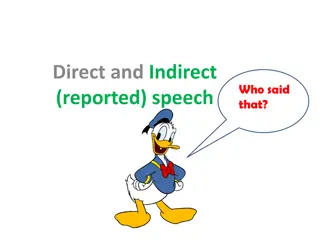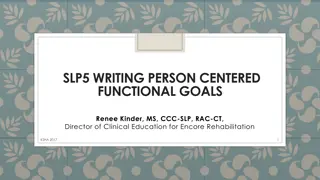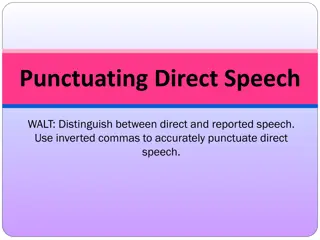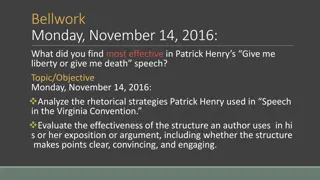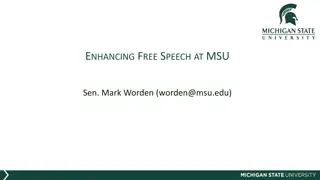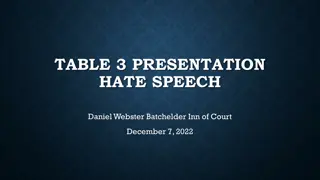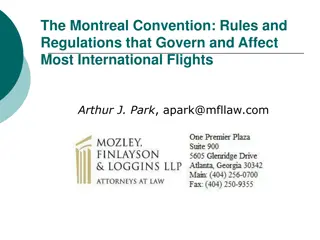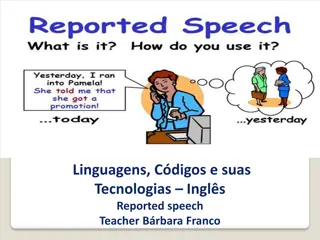Speech at the Virginia Convention
Analyze the use of rhetorical devices in crafting effective arguments, focusing on appeals to ethos, logos, and pathos. Explore examples such as rhetorical questions, parallelism, and diction to enhance argumentative impact.
Download Presentation

Please find below an Image/Link to download the presentation.
The content on the website is provided AS IS for your information and personal use only. It may not be sold, licensed, or shared on other websites without obtaining consent from the author.If you encounter any issues during the download, it is possible that the publisher has removed the file from their server.
You are allowed to download the files provided on this website for personal or commercial use, subject to the condition that they are used lawfully. All files are the property of their respective owners.
The content on the website is provided AS IS for your information and personal use only. It may not be sold, licensed, or shared on other websites without obtaining consent from the author.
E N D
Presentation Transcript
Speech at the Virginia Convention RHETORICAL DEVICES
Objectives To analyze what makes an effective argument To understand how context, audience, and subject affect an argument To identify and rhetorical devices and how they function in a piece of text
Rhetorical Analysis In order for an argument to be effective, it has to appeal to the audience. Think back to the argument you used to convince your parents to send you on a trip to Costa Rica. What type of appeals did you use? Facts or statistics? Your credibility? Emotion? What else?
Rhetorical Analysis Aristotle, an ancient Greek philosopher, claimed that there are three appeals to use to create an effective argument: 1. Ethos - Appeal to character/credibility Convincing your audience you are reliable and believable If the audience trusts you, they will be more likely to believe you. 2. Logos - Appeal to logic and reason Convincing the audience through the use of logical thought, fact, and rationality This can prove to the audience that your argument is sound 3. Pathos - Appeal to emotion Convincing the audience by creating an emotional response in the reader This can play on the hopes and fears or appeal to the particular beliefs of the audience.
Now, lets look at the specific rhetorical devices Henry uses to craft his argument. Rhetorical Questions Asking the audience a question without expecting an answer Repetition The repetition of specific words and/or phrases Allusion Reference to something from history, literature, politics, sports, science, or art Metaphor A figure of speech directly comparing two unlike things
Now, lets look at the specific rhetorical devices Henry uses to craft his argument. Parallelism Sentences or phrases that are structured in the same way - often the same words are repeated. Example: government of the people, by the people, for the people. Antithesis Two contrasting ideas are presented, usually in parallel structure. Example: That s one small step for man, one giant leap for mankind.
Now, lets look at the specific rhetorical devices Henry uses to craft his argument. Diction The author s choice of words You cannot just say the author uses diction. This just means the author uses words. You must use a modifier when describing diction Example: powerful, emotional, enthusiastic, negative
Rhetorical Analysis When making an effective argument, one must consider the audience, the time period, and what he or she is trying to achieve. A good speaker/writer will consider all of these elements and mold his/her argument to meet the needs of the audience and the context. (think logos, pathos, ethos) In order to more closely analyze Patrick Henry s speech and how he crafted his argument, we are going to use a format called SOAPSTone.
S = Speaker S O A P S Tone Who is delivering or writing the text? O = Occasion The time and place of the text. The context that prompted the writing. A = Audience The group of readers/listeners to whom the piece is directed. P = Purpose Why the author is writing or delivering the text. Usually phrased in an in order to phrase S = Subject The central idea of the text Tone The writer s attitude towards the subject
Speech at the Virginia Convention Patrick Henry (1736-1799) The Orator of Liberty Lawyer One of the earliest opponents of British rule in the American colonies After the revolution, served as governor of Virginia and a state legislator Virginia Convention March 20, 1775 British Intolerable Acts had been instated Organized by the Virginia House of Burgesses George Washington and Thomas Jefferson attended Purpose: To decide what to do about Britain s increasing pressures
Speech at the Virginia Convention About the speech: Many representatives who spoke before Patrick Henry advocated compromise with the British Henry s speech encouraged those in attendance to forget negotiation and go to war with England Right after Henry s speech the House of Burgesses voted to go to war with England One month later the Revolutionary War began
Audience Looking at the picture, what can you say about the audience?
Lets Read - Class assignment We will listen to the speech as a class. Each member of your group will be responsible for finding examples of rhetorical devices. Use your assigned color to highlight the examples. Hearts green antithesis and powerful diction Spades blue parallelism and repetition Clubs yellow allusion and metaphor Diamonds pink - rhetorical questions and appeals (logos, pathos, ethos) In addition to highlighting, please label the examples on your speech
Class Assignment After we have finished reading the speech, please complete the chart as a group. Before you write down the examples from your classmates, please discuss to be sure they are correct examples of the rhetorical terms. You only need analysis for the FIVE of the devices. Answer the last question individually.
Rhetorical Analysis Prompt Write an essay in which you analyze the rhetorical strategies Patrick Henry uses to achieve his purpose.
The graphic organizer This graphic organizer will provide you with the textual evidence/analysis necessary to complete your essay: Specific instances from the text using rhetorical strategies/devices. The analysis of how these strategies/devices further Henry s purpose.
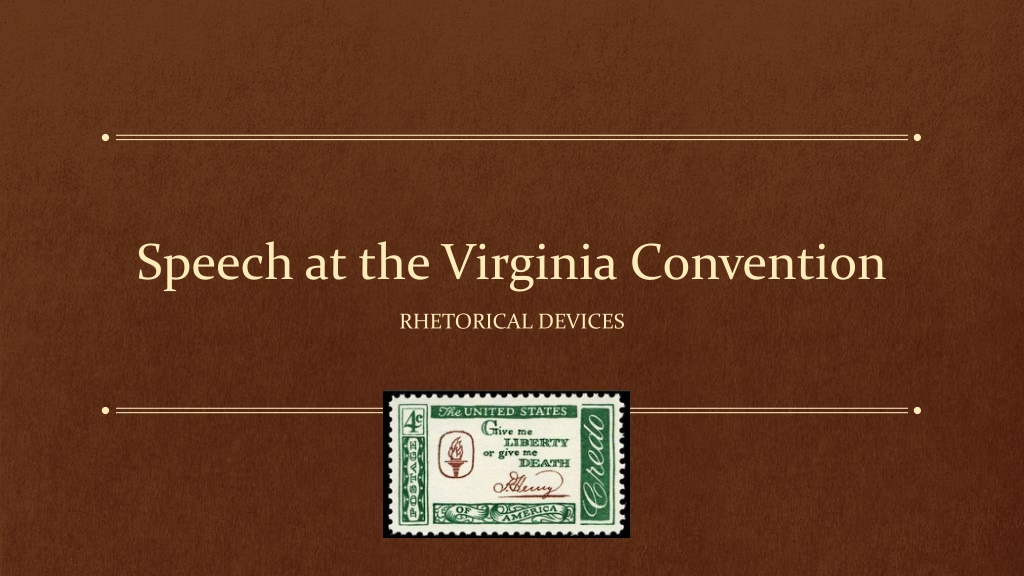
 undefined
undefined






![Prevention and Combating of Hate Crimes and Hate Speech Bill [B.9B.2018]](/thumb/60513/prevention-and-combating-of-hate-crimes-and-hate-speech-bill-b-9b-2018.jpg)

